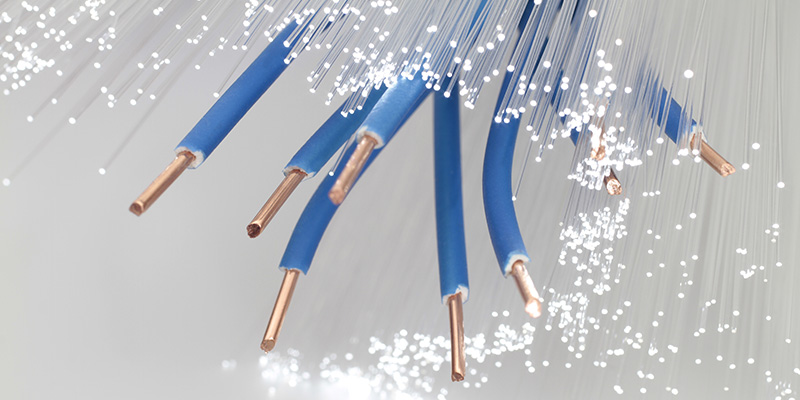Blog
Copper Cable vs Fiber Optics
Fiber optic cable has many advantages over copper cable. Fiber transmits data much faster over longer distances than copper. Fiber cable is also smaller diameter and weighs less than its copper counterpart, making it ideal for a variety of cabling solutions. Fiber optics are immune to RFI (radio frequency interference) and EMI (electromagnetic interference) making […]
Read MoredB vs. Optical Power Loss
In designing an optical link, the optical link loss budget must be calculated. This reflects the difference of power generated by the transmitter compared to the amount of light the receiver is set to receive. In calculating link loss budgets, first consider the output power of the transmitter. For example, most multimode transceivers have a […]
Read MoreFiber Optic Connectors
Learn about various fiber optic connector styles. ST Connector Slotted bayonet type connector with long ferrule. Common connector for mulitmode fibers. SC Connectors Push/pull connector that can also be used with duplex fiber constuction. LC Connectors Much like the SC connector but with a ferrule that is half the size. MU Connectors Much like the [...]
Read MoreFiber Optics 101
To learn more about how fiber optics work, watch the Fiber Optics 101 presentation. Fiber Optics 101 Download the PDF. Download the Fiber Optics 101 presentation as a PDF.
Read MoreFiber Optics for Campus Networks
Universities and educational institutions are rapidly migrating to fiber optics for their campus networking needs. The cost of fiber optics is becoming much more affordable, allowing both public and private institutions to expand campus networks and reap the benefits of fiber optic technology. Universities and other higher education institutions are deploying fiber to support campus […]
Read MoreHistory of Fiber Optics
As far back as Roman times, glass has been drawn into fibers. Yet, it was not until the 1790s that the French Chappe brothers invented the first “optical telegraph.” It was a system comprised of a series of lights mounted on towers where operators would relay a message from one tower to the next. Over […]
Read More





